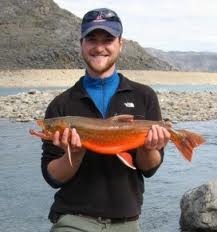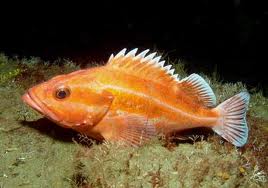How populations are structured across a land/waterscape in terms of genetic, morphological, and life history attributes, and that factors that promote and sustain such structure is of fundamental interest to evolution and biogeography. Freshwater fishes provide excellent systems to understand structure and connectivity between areas owing to the basic fact that watersheds are heavily influenced by the underlying geomorphology and its history. We try to understand the origins (historical, contemporary) and significance to population persistence and local adaptation of geographic variation in fishes.
Julian Heavyside (MSc, 2021) worked to understand movements and population dynamics of a central coast population of Dolly Varden, one of BC's least studied salmonid fishes.
Jean-Sebastien Moore (PhD, 2012) completed a dissertation examining dispersal in Canadian Arctic char and its relationship to gene flow and the evolution of population structure. He developed productive collaborations with DFO (Winnipeg) and local communities of Cambridge Bay, NU, to complete this work. He is now an Assistant Professor at Laval. 
Matt Seigle and Stefan Dick completed MSc degrees on connectivity and marine protected areas in the yelloweye and copper rockfishes. Matt later completed a PhD (2017) while co-supervised with Mary O'Connor and now works for DFO. Stefan is also working in consulting.

Carla Crossman (MSc, 2012) completed a study of population structure (using mtDNA and microsatellites) in the harbour porpoise, a secretive cetacean found on the west coast and assessed as Special concern by COSEWIC. She was co-supervised by Lance Barrett-Leonard of the Vancouver Aquarium and Marine Science Centre. Carla is now working on a PhD at St. Mary's University in Halifax

Amanda Moreira defended her MSc in Oct, 2014 where she studied "Gwenish", an ecotype of kokanee (Oncorhynchus nerka) that is jet black when mature and spawns deep in lakes in the wintertime. Gwenish are also known locally as "floaters" for their tendency to
rise to the surface following deep lake spawning. Although known from only two lakes in the central Interior of BC where it is highly valued by the St'at'imc Peoples, a similar form has been described from two lakes in Japan and is known there as O. kawamurae.